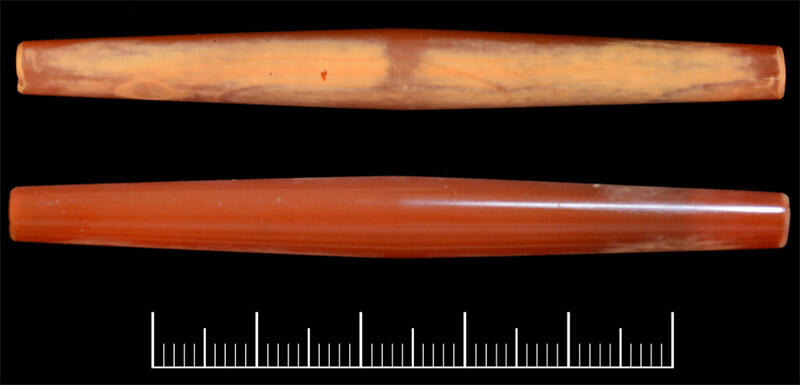A detailed look at carnelian and agate sources and manufacture throughout the Gulf region, and how many of the beads found show clear evidence of ancient Indus manufacturing techniques. As the authors write: "Recent studies using more refined techniques of morphological and technological analysis confirm that many of the carnelian beads, both long biconical ones as well as some of the “etched” or what we call bleached carnelian beads were indeed made by Indus or Indus trained craftspersons, either in the Indus or in some other region. It is also evident that some beads were modified somewhere along the route between the Indus and Oman, possibly in Mesopotamia or even locally."
Beautiful images of this key ancient Indus product show how widespread the appreciation for carnelian beads was in ancient times, as well as how complex the drilling and manufacturing techniques were. The insight that modern analytic techniques, like those using a scanning electron microscope (SEM) are remarkable; similarly instrumental neutron activation analysis (INAA) analysis can tell us about the sources of carnelian and agate used to make the beads.
The authors conclude: "This brief overview of some major styles of carnelian beads from Oman and the UAE provide evidence for the wide range of beads used in the region and the variations of drilling found on similar shapes. Ongoing studies of beads from all major periods will gradually allow scholars to make more meaningful interpretations regarding trade networks as well as the long term use and curation of beads that span multiple time periods. Raw material analysis and sourcing as well as more detailed analysis of workshop styles will also make it possible to determine which regions were supplying beads to the Arabian peninsula during different periods."
Images:
1. Major archaeological sites mentioned in the text (map by J.M. Kenoyer © 2018).
2. Bat, Grave 155 (13A-10434, DA32237). Very very long biconical carnelian bead, showing red-orange original surface and discolored surface (image by J.M. Kenoyer).




